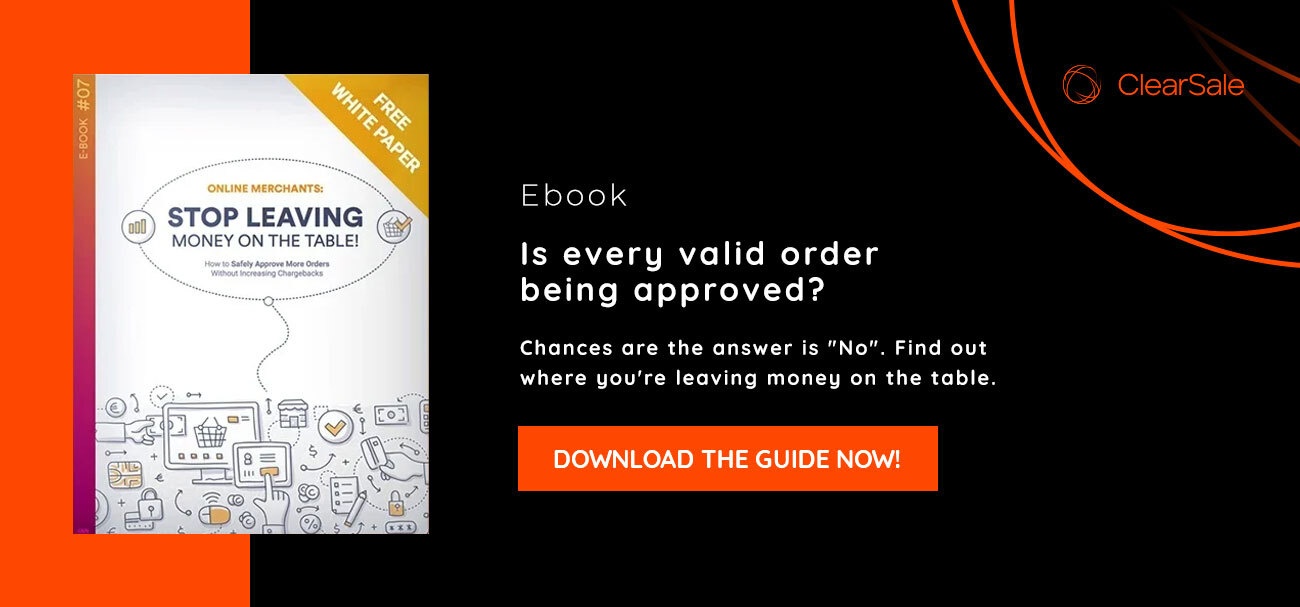The State of False Declines in E-Commerce [Infographic]
Despite all the attention that online fraud gets in the news, merchants might be surprised to learn that fraud isn’t their biggest risk when it comes to doing business online. Instead, it’s false declines. Retailers lost more money to false declines ($118 billion) than they lost to actual credit card fraud ($9 billion) in 2016
As fraud levels continue to rise, it’s no wonder that false declines do, too. The reason? When e-commerce merchants become more active in fraud prevention, they often become more conservative in their decision-making, which can lead to increased false declines. In fact, a report commissioned by ClearSale and conducted by the Aite Group projects false declines will grow to $443 billion by 2021.
So how do these rising false decline rates affect an online merchant’s business, and why should merchants be concerned?
In “The e-Commerce Conundrum: Balancing False Declines and Fraud Prevention,” a new report commissioned by ClearSale, Aite Group illustrates the impact false declines can have on e-commerce merchants.
Percentage of Merchants Tracking False Declines
With false declines having such a significant impact on merchants — from decreasing revenue to increasing lost sales and customer dissatisfaction — it’s no wonder nearly 80% of merchants currently track them as one of their key metrics.
How Merchants Identify False Declines
One of the core challenges of managing false declines is that it can be tricky to know when a false decline has happened. Smart merchants are using three key tactics to accurately measure their false declines:
- Monitor Second Attempts. A majority of merchants monitor second attempts to purchase goods that don’t result in a chargeback or a false decline of the original transaction.
- Use a Control Group. Some merchants use control groups in which they deliberately approve suspicious transactions. When transactions don’t result in chargebacks, merchants feed that data into their risk models to improve future results.
- Make Contact With Customers. Other e-commerce businesses use inbound customer contact methods (like phone calls, emails and online chats) to help them better understand their false decline levels.
False Decline Rate, as Reported by Merchants Tracking False Declines as a Key Metric
Even as merchants monitor their false decline rates, we see that merchants’ estimates of those rates vary significantly among businesses and verticals — ranging from more than 10% to less than 0.5%.
Percentage of Transactions Autodeclined by Fraud Prevention Solutions
Merchants may want to believe their fraud prevention solution is working well. But when fraud solutions rely on automatically declining all suspicious transactions, some good transactions will inevitably be lumped in with the bad transactions and incorrectly declined.
Aite Group reports that most e-commerce merchants surveyed automatically decline between 3.1% and 7.5% of all transactions — not an insignificant number.
Sources of False Declines, According to Merchants That Track This Metric
Here’s another problem with isolating false declines: Because different parties can be the source of false declines, merchants don’t always know exactly who might be declining a transaction during the authorization process.
Change to False Decline Rates in the Last Two Years
Unfortunately, even those merchants that are vigilantly tracking false declines are seeing levels rise, not fall.
Even with fraud escalating rapidly, merchants don’t have to be burdened with the revenue loss caused by false declines. One way merchants can improve their ability to identify and prevent false declines is by implementing a fraud prevention strategy that uses a combination of highly skilled analysts and deep-learning algorithms. The result? Merchants can build their client base and keep more of their hard-earned revenue without losing sales and customer loyalty to fraud and false declines.
To learn more about reducing false declines as part of a robust fraud prevention program, contact one of the experts at ClearSale.
 Chargeback & Fraud Protection Team
Chargeback & Fraud Protection Team

